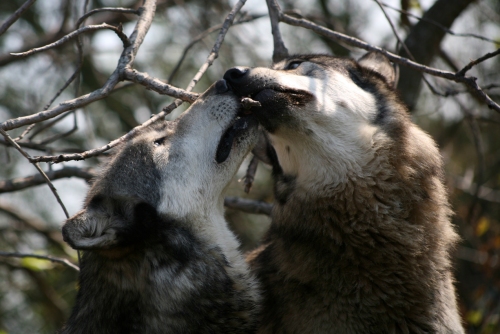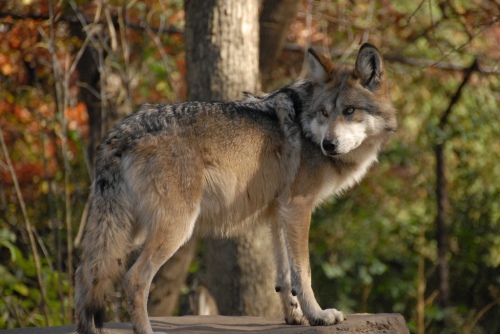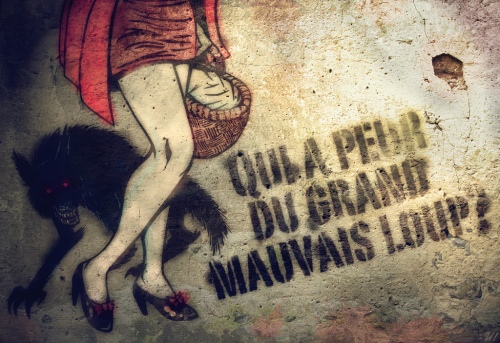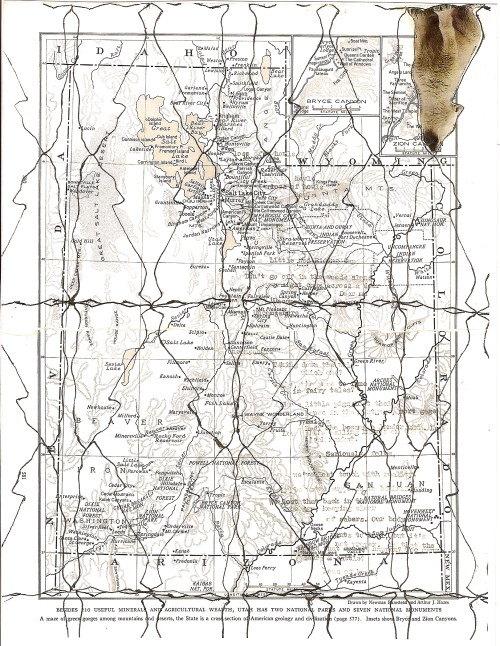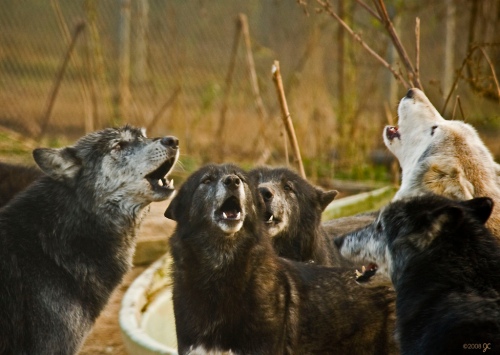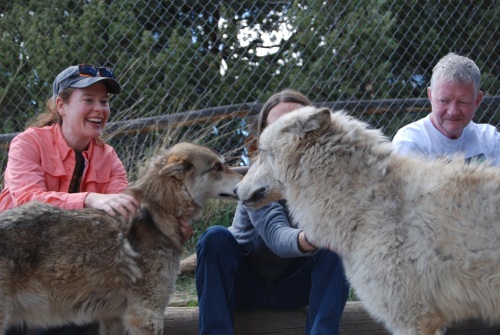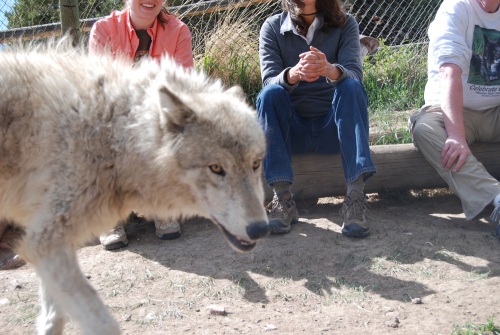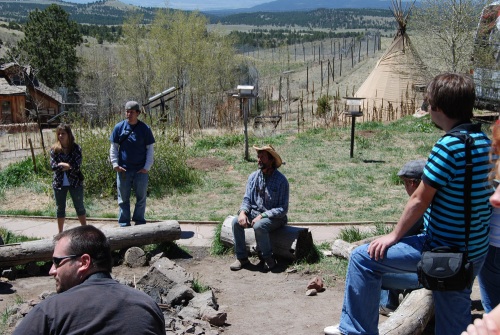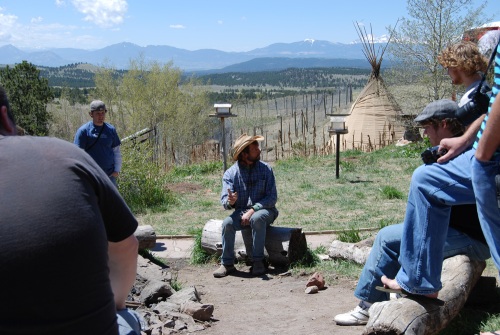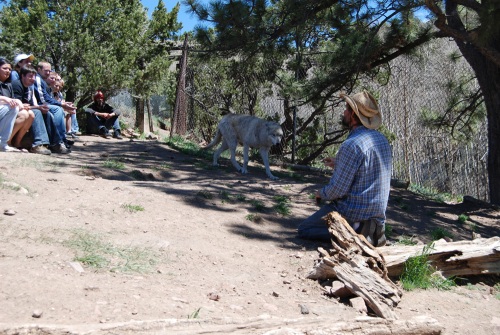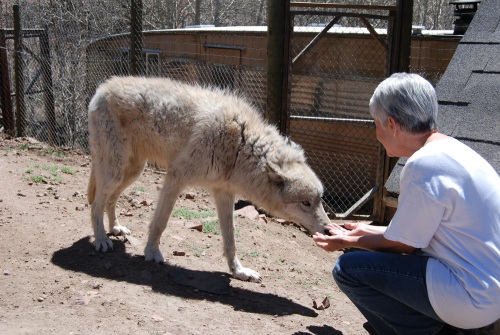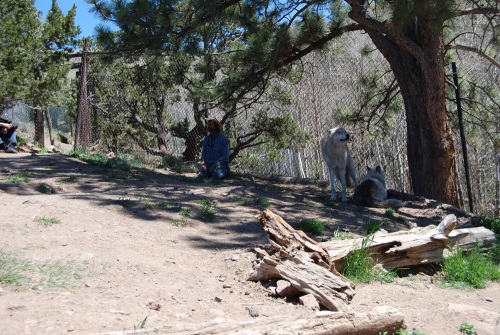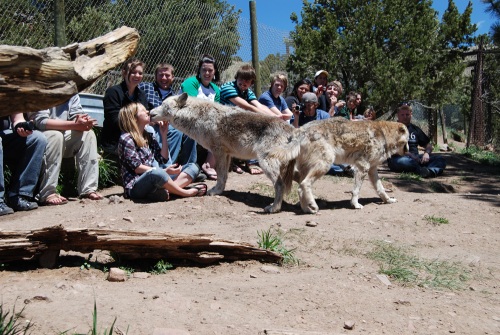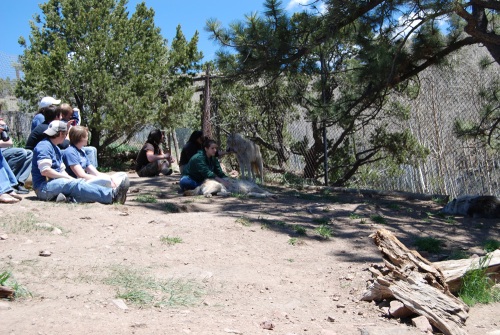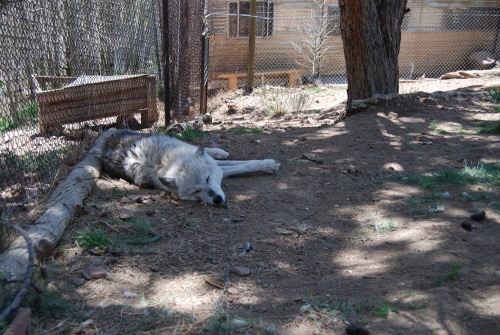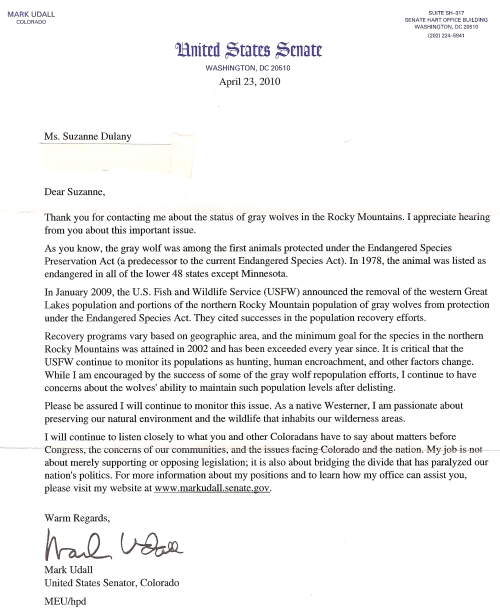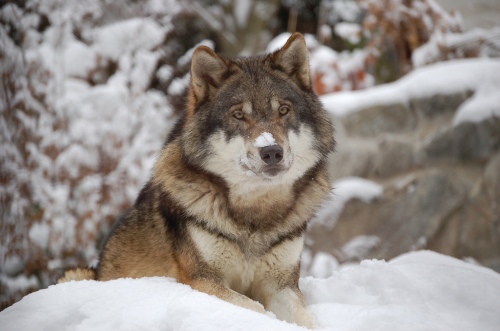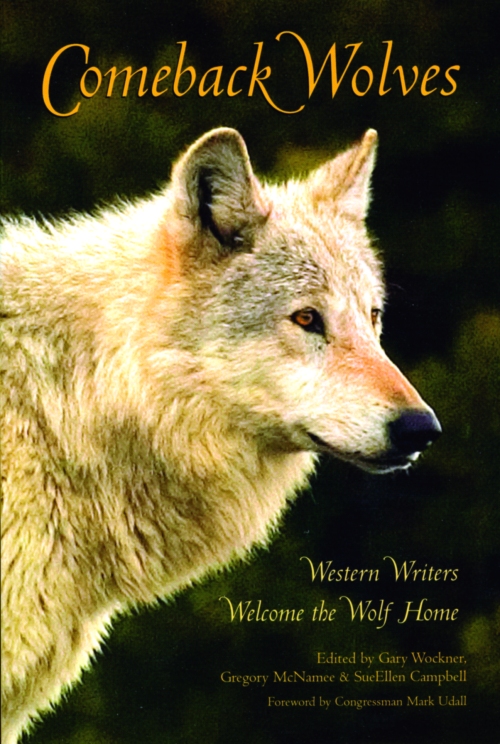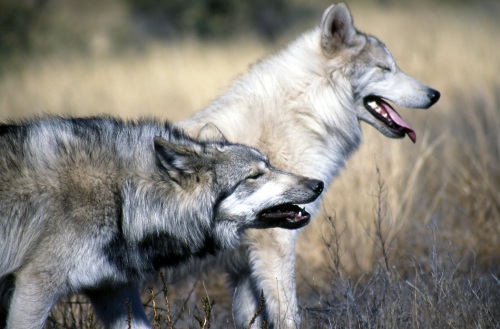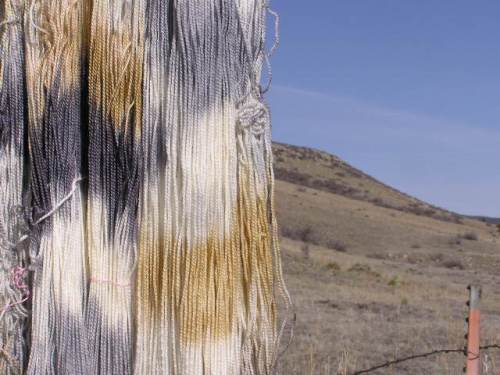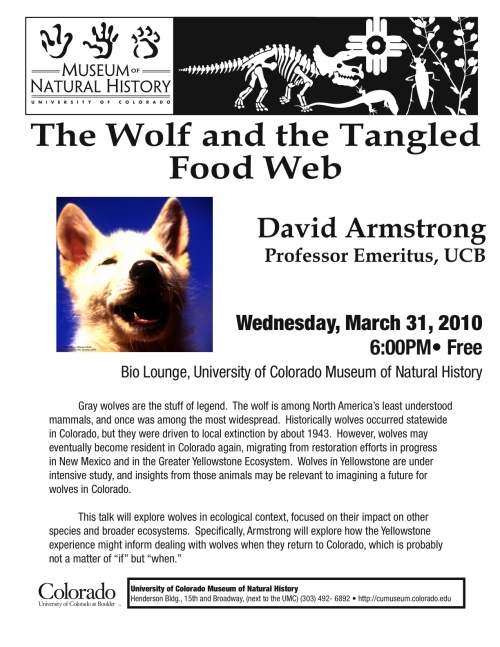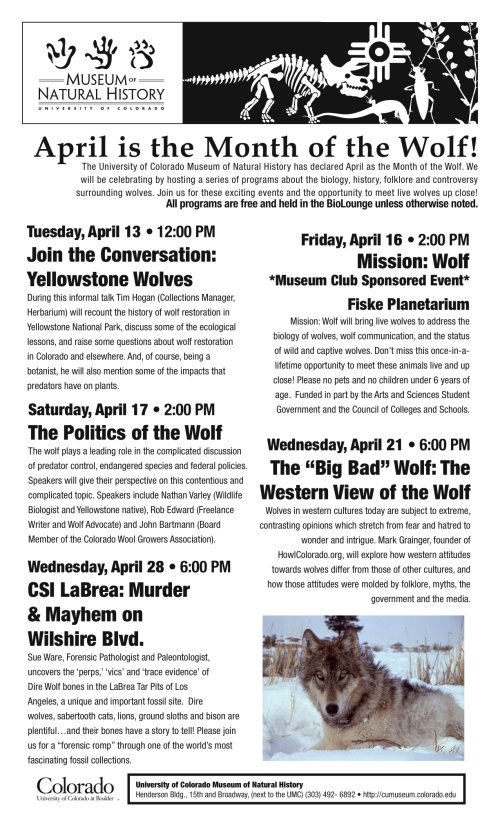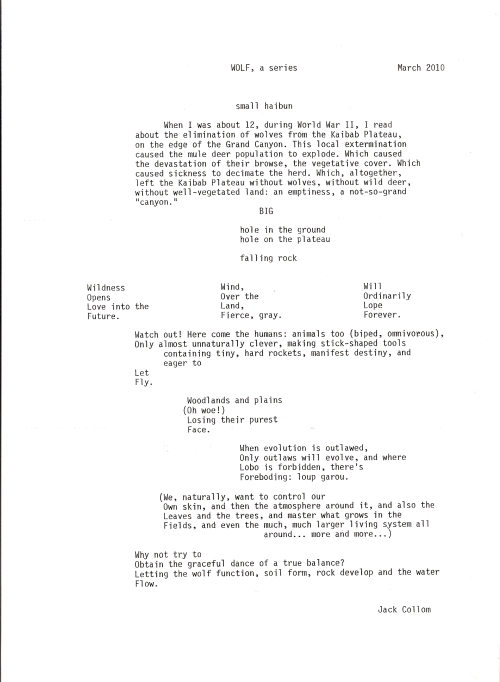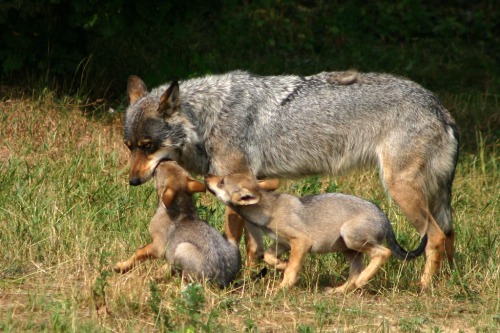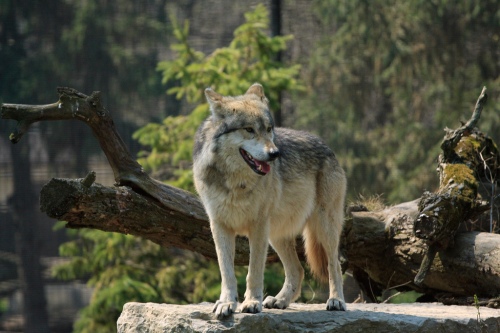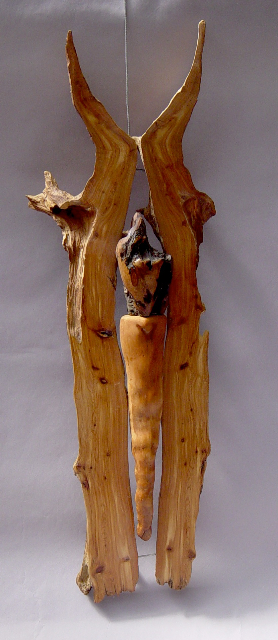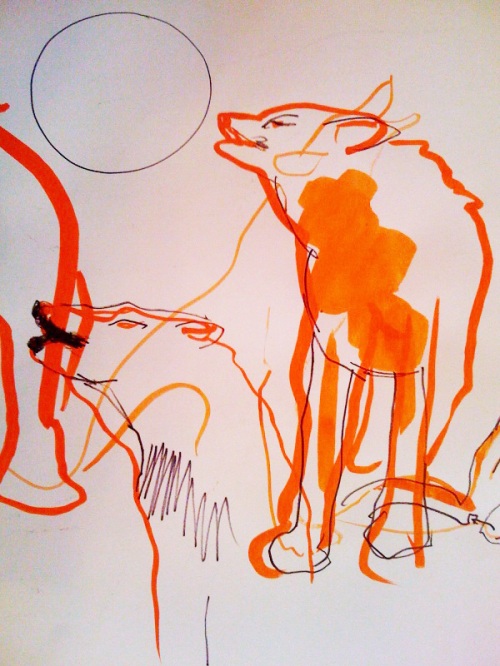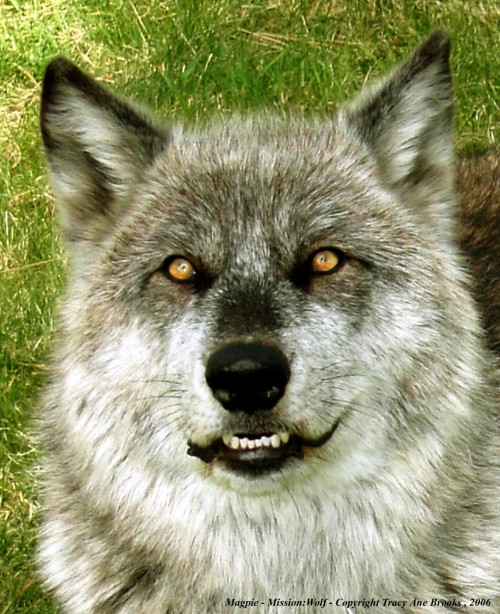
On April 16th, Kent Weber of Mission: Wolf brought three ambassador wolves to the University of Colorado, Boulder, as part of Month of the Wolf. Magpie, the elder Gray Wolf, at age eight, set a fine example for Abraham, the wolf-dog, and Illiamna, a one-year old Arctic Wolf pup. Magpie has been in the program since she was four months old, meeting over 100,000 people from coast to coast. Since the 1990’s, the ambassador program has reached over a million people, helping to dispel negative stereotypes about wolves.
Weber opened the event at CU’s Fiske Planetarium, with a short lecture on the dynamics of wolf-human contact. He also spoke firmly against any notions of wolves or wolf-dogs as pets. Though Mission: Wolf gives refuge to both – captive born animals from the film industry and from private owners – many others are euthanized because they cannot be domesticated or placed in shelters. There aren’t enough wolf sanctuaries to rescue them all. Breeders don’t help the situation. It’s illegal to sell a wolf, but selling a “part wolf,” is legal, and lucrative. This financial incentive is part of the problem, and Weber wants to educate people so they can choose not to participate.
After the discussion, a large crowd of perhaps 150-200 students, staff, and visitors, moved to an outdoor area and formed a circle to meet the ambassadors. Weber was concerned the wolves would be reluctant to enter the space, so he instructed everyone to sit down and be as quiet as possible. The silence was immediate and heartfelt. The wolves were led from the tour bus by Weber and his wife Tracy, entering the circle without hesitation: Magpie and Abraham in the lead, and Illiamna behind. Their body language – tails relaxed and wagging – indicated they were comfortable in the crowd and had complete trust in their handlers. As they moved around the circle, each stopped to lick a face now and then, charming the audience with their friendliness, presence, and beauty. Young and playful Illiamna was already larger than his adult companions. Arctic Wolves are built to survive in extremely harsh conditions – with longer legs, smaller ears, and heavier bodies.
Mission: Wolf is a non-profit organization dedicated to “education vs. extinction.” Meeting wolf ambassadors is a powerful and life-changing experience, and without a doubt, this work is integral for the continued acceptance and survival of wild wolves in the U.S, and beyond. Thank you Mission: Wolf!
Below is an excerpt from the book The Outermost House, by Henry Beston (1888-1968), quoted in the lecture by Tim Hogan, earlier in Month of the Wolf. It bears mentioning here:
“We need another and a wiser and perhaps more mystical concept of animals. Remote from universal nature and living by complicated artifice, man in civilization surveys the creature through the glass of his knowledge and sees thereby a feather magnified and the whole image in distortion. We patronize them for their incompleteness, for their tragic fate for having taken form so far below ourselves. And therein do we err. For the animal shall not be measured by man. In a world older and more complete than ours, they move finished and complete, gifted with the extension of the senses we have lost or never attained, living by voices we shall never hear. They are not brethren, they are not underlings: they are other nations, caught with ourselves in the net of life and time, fellow prisoners of the splendour and travail of the earth.”
Visit the Mission: Wolf website for more complete information about their history and programs.
http://www.missionwolf.com/index.asp

